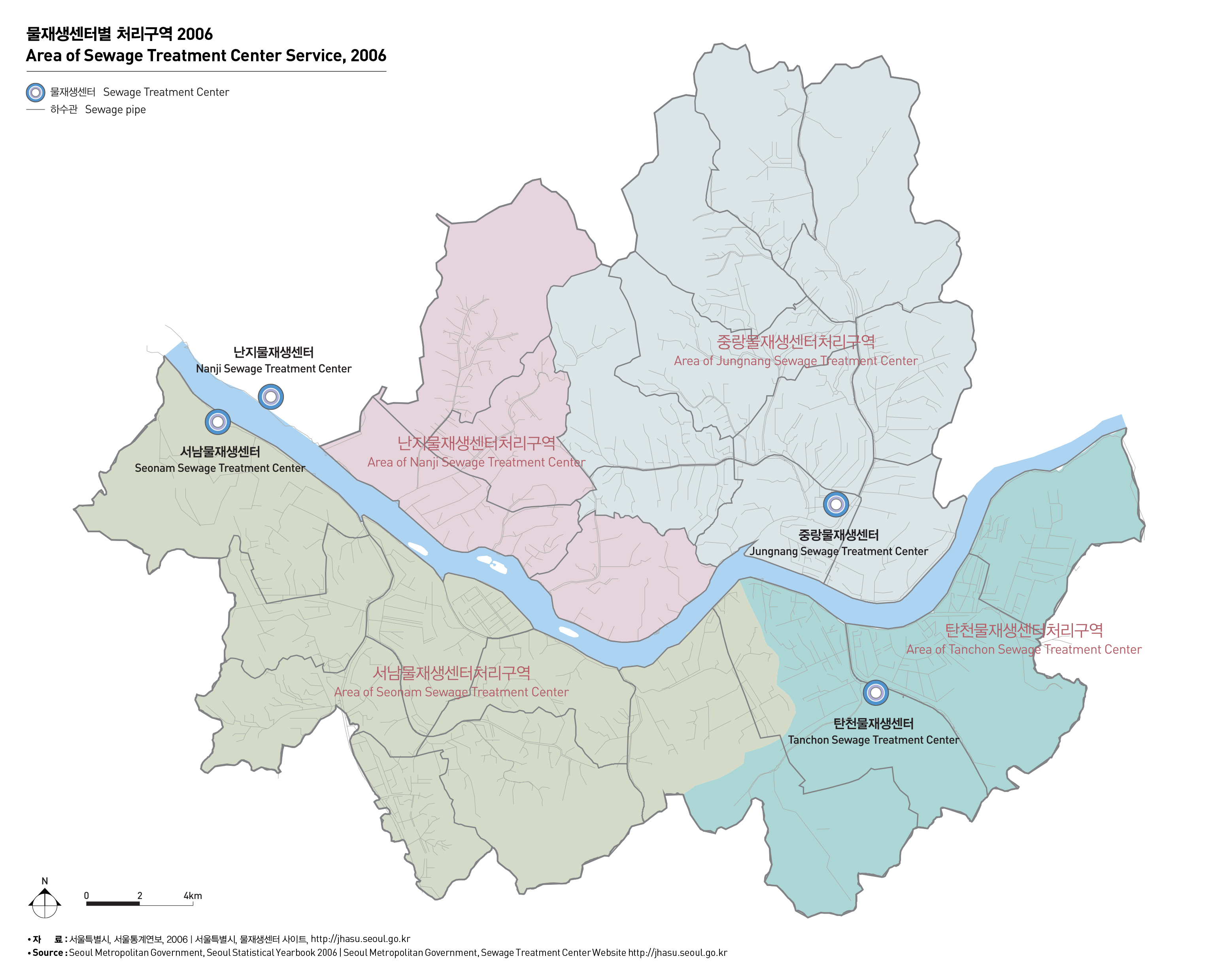-
환경
하수도
-
하수도
서울은 하수에 의한 공공수역의 수질오염문제가 대두되면서 1976년 시설용량 15만톤/일의 청계하수처리장 건설을 시작으로 1988년부터 본격적인 하수처리를 하게 되었으며 현재 하수도보급률은 100%로서 서울시민 모두가 하수도 혜택을 받고 있다. 중랑, 탄천, 서남, 난지 4개의 물재생센터에서 1일 581만톤의 처리용량을 갖추고 하수처리구역내에서 발생하는 하수의 전량과 분뇨를 처리하고 있으며, 2004년부터는 하수를 더욱 깨끗이 처리하기 위하여 고도처리시설 사업을 진행하고 있다. 또한 1992년부터 하수관거정비사업을 추진하여 노후된 불량하수관거를 정비함으로써 지하수 등의 불명수량을 줄이고 상습침수지역의 침수피해를 저감시키며 하천수질을 개선하여 쾌적하고 안전한 도시생활환경을 제공하려고 노력하고 있다.
SEWAGE
As water pollution in the public waters emerged as an urgent problem, Seoul built a Chonggye sewage treatment center with a capacity of 150,000 tons/day in 1976. Seoul began to treat sewage at the facility in earnest in 1988, and all Seoul citizens are benefiting from the 100% sewage distribution rates. Four sewage treatment centers with a capacity of 5.81 million ton/day in Jungnang, Tancheon, Seonam and Nanji treat all sewage and excretions. Seoul city began to introduce a sophisticated treatment facility to make sewage cleaner in 2004. Beyond that, it pushed ahead with a project to improve the outworn and poor sewer system in 1992, with a view to reducing groundwater infiltration/inflow, minimizing the damage from inundation in frequently flooded districts, and improving the river quality, ultimately contributing to creating a pleasant and safe urban environment.
출처 : 서울특별시, 서울통계연보, 2006
서울특별시, 물재생센터 사이트 http://jhasu.seoul.go.kr

